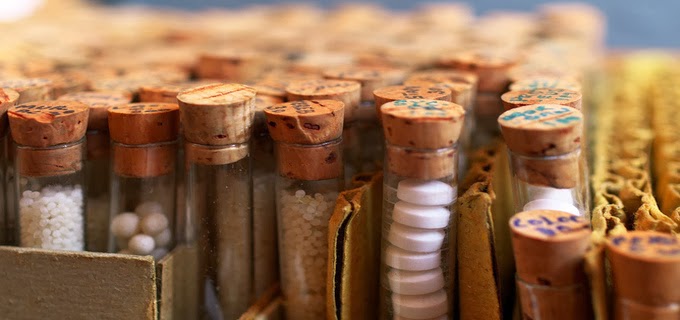Ruta is derived from a herb called Rue-Bitterwort. This
herb has also been utilised in many other
conventional medicines. Its seeds have also been previously used to
neutralize the ill effects of many poisons. The homoeopathic remedy is extracted after grinding
the herb,
including its root.
Ruta, like Arnica, is one of those remedies used in the
treatment of injuries. It is especially useful in
the treatment of bone
injuries. When
a part of the body is subjected to unusually
heavy pressure, load or pull and becomes stiff,
then Ruta (like Rhus Tox and Millefolium) can also be very useful.
Regarding its effects on such injuries, Ruta resembles Rhus Tox a
lot. The symptoms of Ruta aggravate from both cold and heat.
Athletes who develop heart problems
under severe physical strain may well be treated with Ruta and
Aconite combined. In workers doing fine work, the eyesight becomes badly affected.
The eyes feel tired, the eyesight becomes dim and there is a
feeling of pressure and pain in the eyes, especially the left eye. The
eyes quiver. Ruta may indeed be very useful in the treatment of this
eye problem.
Due to heavy strenuous exercises undertaken over a long
period, the hearts of some athletes may become enlarged. It is a very common notion that the heart once enlarged cannot revert to its
normal size. In homoeopathy however, it is possible
to control the size of the heart. The
stretched out muscle fibres of the heart become elastic once again and
retract to the original size. Ruta and Rhus Tox behave very similarily to each
other in this respect.
Once nerve
fibres become injured, common conventional nerve tonics are of no avail. Even Arnica may not be effective.
However, Ruta and Rhus Tox are found to be extremely effective.
Hypericum is also very useful in the treatment of the injury to the
nerves. Accidental cuts on the bone during surgery can heal very well with
Ruta. Ruta expedites the healing
of broken bones (fractures) by revitalizing the outer coverings of the bone (periosteum). The combination of
Ruta, Calcarea Phos and Symphytum proves very effective. Calcarea
Phos works on the inner substance of the bone while Ruta and
Symphytum
invigorate the periosteum. In case the injury is fresh, Arnica 30
may also
be included. In general, Ruta is indicated in the treatment of patients
who are not anaemic but who tend to bleed. Ruta
is useful in the treatment
of various
fevers, neuralgias and a sub-normally functioning stomach. The Ruta patient is very sensitive and easily enraged. The
legs feel weak and unable to carry the weight of the body. The limbs
feel tired and painful; especially
there is pain in the back (upper and
lower parts, both). These are the salient features of Ruta. The
severity of pain is easier on lying down flat, however generally the
pain is worse
with rest and better for movement. Rest aggravates while
movement ameliorates the
pain. There is pain over the mastoid processes (the prominences behind the ears) and heaviness in the ears. The facial bones hurt. The gums are sore and bleed easily. At about midnight, the
patient wakes up due to
coughing, tightness of the chest and heaviness. The
trachea hurts as if physically injured. Ruta has already been mentioned under ankle sprains. Ruta is no doubt very famous for the treatment of this condition.
Ruta is also useful in the treatment of pain in the bones of the feet that makes walking difficult, the feeling of formation of sores on
the feet, wrist sprains, as well
as the stiffness of the fingers.





